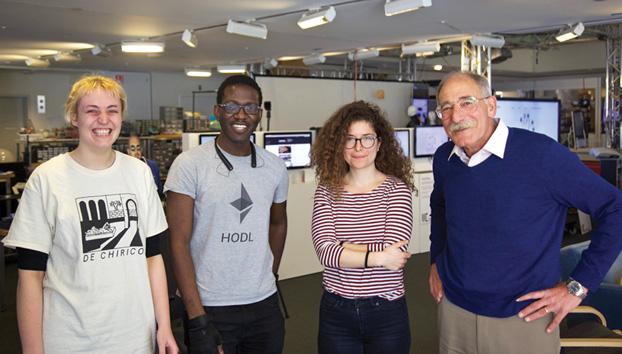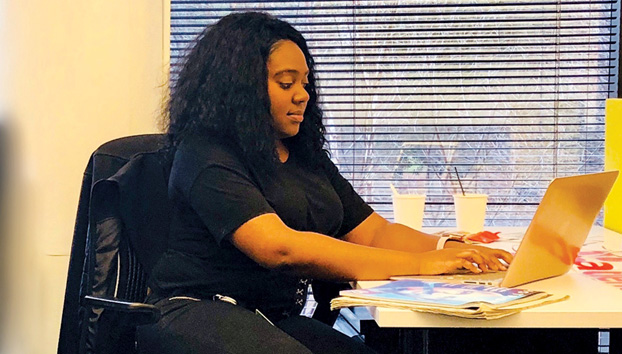Electronic health records may have digitized patient data, but getting that data from one clinician to another remains a huge challenge, especially since patients often have multiple doctors ordering tests, prescribing drugs, and providing treatment. Many experts now believe that blockchain technology might be just the thing to get a patient’s pertinent medical information from where it is stored to where it is needed, as well as to allow patients to easily view their own medical histories. In addition, blockchain technology might also be able to help with other aspects of health care, such as improving the insurance claim or other administrative processes within healthcare networks and making health-related population data available to biomedical researchers.

All these possibilities hinge on blockchain technology, which gained recognition as the foundational technology behind the cryptocurrency bitcoin. In that case, the blockchain technology is a public, decentralized, digital ledger of transactions that eliminates any chance of financial sleight of hand. All transactions are front and center for everyone to see, no one organization owns and operates the ledger, and there’s no opportunity to go back and change an entry.
“Because of multisystem platforms and an often-fragmented environment within health care, I think this distributed-ledger technology has immense potential to help with some critical components,” remarks Mari Greenberger (right), director of informatics at Healthcare Information and Management Systems Society (HIMSS) North America, a not-for-profit professional society with 70,000-plus corporate, association, and individual members. Blockchain is starting to infiltrate into other industries, she adds, and early successes and pilots are encouraging major healthcare players as well as innovators to take note.
From Buzzword to Reality
How will blockchain technology affect the healthcare industry? That question is at the core of the HIMSS Blockchain Work Group, organized in 2017 by HIMSS North America. “Blockchain is one of the top buzzwords, so it’s easy to get shiny-object syndrome and start thinking it will solve everything,” says Greenberger. “That’s why HIMSS decided to look under the hood and be very thoughtful with how we approach the technology, and this is what we hope to accomplish with this work group.”
Since its inception, the work group has been investigating possible blockchain use cases for health care and considering the obstacles facing its implementation, such as the typical hesitation to adopt new technology, regulatory constraints, and privacy and security concerns, Greenberger notes. “There will also be capital expenditures and costs of operation, and we don’t know those costs yet because the technology is still too new. And the volume of clinical data generated from healthcare organizations is immense, so decisions will have to be made about what’s ‘on-chain’ and what’s ‘off-chain.’ These are just some of the considerations that everyone is going to have to take into account.”
As part of its effort, the work group and HIMSS are putting together a series of online articles [1], [2], are beginning to submit journal articles, and will be offering educational sessions to explore the avenues for blockchain in health care [3]. “Our intention is to evolve this work group into a standing task force at HIMSS,” Greenberger says, adding with a laugh, “The work group is never going to finish its work.” HIMSS sees the value in exploring this technology further and providing thought leadership, as the topic and use of the technology evolve within the healthcare sector.

Another organization delving into the prospects for blockchain in health care is the Blockchain Research Institute, a Toronto-based think tank that brings together blockchain experts from around the world to explore blockchain applications, use cases, and strategies in a variety of industries, including health care, according to Hilary Carter (right), director of faculty at the institute. Launched in March 2017, the institute receives funding from Canadian federal, provincial, and local governments and from global corporations.
The institute is beginning to produce a series of research reports and case studies on blockchain’s potential impact across industries and taking a careful look at its role and the hurdles it will face in the healthcare sector. For instance, because the blockchain for cryptocurrency is an open or public blockchain that is universally transparent, anyone can look at transactions that take place. That may work for some applications, but it is likely not appropriate for medical information, says Carter. As a result, innovators began developing alternative blockchain protocols (e.g., Hyperledger [4]) that would allow a more private transfer of their items of value. “With these alternative protocols, I can exchange my health record, I can send a vote, I can do all kinds of wonderful things, such as publish content on the blockchain so I would then have intellectual property rights to it because the content is then embedded, recorded, immutable, and transparent,” she explains. “At the end of the day, this is a unique software with incredibly powerful features that will allow us to exchange units in a secure fashion, unlike other digital advances that came before it.”
Like many other blockchain experts, both Greenberger and Carter see the technology as having its biggest impact on health care through patient access to and control over their records. Carter contends, “When individuals can become the owners of their patient health histories and their health identities, and can control that information for the benefit of their own lives and their own health, that will be a transformative moment.”
Links in the Chain
To get the ball rolling, research groups and companies are already hard at work. For instance, a research group at the Massachusetts Institute of Technology (MIT) is using “smart contracts” to manage electronic medical record (EMR) systems that employ the open-source, public Ethereum blockchain technology [5], says Andrew Lippman, senior research scientist with the MIT Media Lab (Figure 3). The work began as a graduate class project by students Ariel Ekblaw, Asaf Azaria, and Thiago Vieira [6]. The current version, MedRec-V2, includes contributions from John Halamka, chief information officer at Boston’s Beth Israel Deaconess Medical Center (see “Hospital CIO Explains Blockchain Potential”), and makes it practical, scalable, and usable by both healthcare providers and patients.

The idea behind MedRec is to allow patients to define permissions via a set of smart contracts that specify the terms and conditions under which someone has remote data access to the patient’s records. Using the example of a magnetic resonance image (MRI), Lippman explains that MedRec can tell the MRI provider to give a particular orthopedist access to that image. “MedRec does not guarantee, however, that the orthopedist will go ahead and get the MRI, nor that the orthopedist can even read the MRI (because of incompatibilities between MRI-reading software),” he says. “There’s a whole large effort on standardizing electronic health records so they’re consistent and they make sense to different providers, but MedRec is not boiling that ocean. We’re only boiling the ocean of the control: who’s authorized to see what. That’s the whole essence of the idea.”
The range of smart contracts is nearly endless, Lippman describes. A patient might, for example, grant short-term, precautionary record access to a medical facility located near a ski resort he or she is visiting; provide a prescription history to his or her regular pharmacist to help avoid adverse drug interactions or conflicting prescriptions from more than one provider; or deed blanket access to a healthcare proxy in the event he or she is incapacitated.
“The blockchain, then, is the ledger on which all of those contracts are stored,” Lippman says. “It’s the underlying glue that ensures the consistency of contracts and that provides this distributed, unalterable record of what all those contracts are.” For MedRec, the blockchain is actually maintained by the participating providers, he explains. “Each provider keeps an up-to-date record of all the contracts and can therefore figure out who should get access to what; and, in turn, they’re providing the security and the redundancy for the system. In addition, since blockchain is distributed, it is far less likely to get attacked [by hackers], and that’s why it makes sense to use a blockchain.”
Currently, the MIT group has turned what started out as a student project into a sophisticated new version, Lippman notes. “We’re bringing the system to the point of credible demonstration. The next step after that is scaling it up to a more robust system that institutions see as something that might work for them.”

The startup company Patientory of Atlanta, Georgia, is also developing blockchain technology for health care [7]. Like MedRec, Patientory uses smart contracts to give patients control over access to their medical records, but it is developing its own cybersecurity blockchain to connect the siloed, centralized EMR systems of different medical institutions, explains Chrissa McFarlane (Figure 4), founder and chief executive officer of Patientory. In addition, Patientory’s overall health information system is designed to provide storage for a patient’s medical records so that he or she can access those records on demand and have them shared with providers at a moment’s notice.
Patientory envisions selling its service to hospitals and healthcare businesses, which, in turn, would provide it to their patients, McFarlane says. For the most part, that type of top-down approach is the goal, but she adds that the company also “sees the value in patients joining organically,” and so it will also offer the service via an app through direct sales to patients. “By having this blockchain that connects with different hospitals and organizations,” McFarlane remarks, “we can access their data and then actually give ownership to patients—regardless of what hospital they visit—via a Patientory patient portal.”
Overall, McFarlane sees Patientory as being at the forefront of trends to offer patients more control over their own health records in an effort to improve care. She points to new regulations in Europe, including the General Data Protection Regulation, that prohibit companies from accessing medical information without the patient’s consent, as well as U.S. government-driven incentives encouraging hospitals to give patients access to their information and value-based care initiatives that promote care coordination. She says blockchain technology enables that kind of coordination.
By last fall, Patientory had successfully completed a pilot of the first iteration of hospital nodes that encrypt and protect medical health records and also allow secure transport of the data to the permissioned blockchain. This involves a three-tiered approach: a presentation tier, or the application through which users interact with the system; a middle tier that provides some off-chain computations; and a final tier, which is the blockchain through which the data are transferred. The company is also pursuing blockchain-enabled transactions and payments through its own cryptocurrency, which it calls PTOY. PTOY is a token rather than e-cash, and it is designed to allow patients to purchase storage space for their medical records and also pay providers for medical services using the heightened security of a blockchain.
Once details are finalized and all of the pieces are in place, McFarlane says, “We’ll start the commercialization process, where we will confer pilots to actual paying customers.” She anticipates that this will take place by the end of 2018 or early 2019.
Making the Data Flow
In its essence, blockchain technology reengineers what is now a suboptimal flow of medical and other data through the healthcare system. Carter of the Blockchain Research Institute remarks, “Better outcomes are derived from better data. Right now, we have data silos, so if we can use blockchain technology to create a commons whereby individuals control their data and hospitals and healthcare professionals are able to have access to more reliable and more readily available data, I think that will serve patients better in the long run. Information is really the key to good research and excellent treatment.”
With all the excitement around the technology, Greenberger reiterates that, while she believes it will soon begin improving healthcare data exchange as well as other aspects of healthcare operations, it is still new territory for the healthcare industry. “There’s great potential, as well as barriers, because we’re just at the beginning,” she comments. “At this point, it’s too early to know exactly how this technology will be used and leveraged along the way.”
References
-
- HIMSS Blockchain Work Group. (2017, Oct. 23). Part 1: Navigating the blockchain landscape—Opportunities in digital health. [Online].
- D. Houlding and H. Flannery. (2018, Feb. 1). Part 2: Healthcare blockchain—A path to success in 2018. [Online].
- HIMSS 2018 conference session. (2018, Mar. 6). Blockchain reset: Seeing through the hype and starting down the path. [Online].
- The Linux Foundation. (2017). About Hyperledger. [Online].
- Ethereum Foundation. (2018). Ethereum: Blockchain app platform. [Online].
- A. Azaria, A. Ekblaw, T. Vieira, and A. Lippman. (2016, Aug. 22–24). MedRec: Using blockchain for medical data access and permission management, presented at the Int. Conf. Open and Big Data, Vienna, Austria. [Online].
- C. McFarlane, M. Beer, J. Brown, and N. Prendergast. (2017, May). Patientory: A healthcare peer-to-peer EMR storage network v1.1. [Online].



